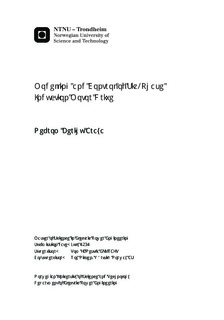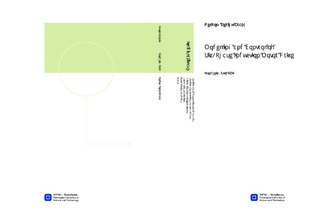| dc.description.abstract | Multiphase machines are of interest to be applied in electric ship propulsion, where increased power ratings, reliability of operation, redundancy and efficiency are required. The study of modelling and control of multiphase drives is important to realize this application.
The main purpose of this thesis was to implement and test control methods for a six-phase induction motor drive. The work focused on continuation and improvement of previous results achieved in the same area of application. The modelling of six-phase induction machine using two different approaches was studied. Based on these approaches, two types of vector control methods were implemented. These are single synchronous frame control (SSFC) and double synchronous frame control (DSFC).
The six-phase induction motor drive was tested for different operating conditions using the two control methods. The motor is normally supplied from two inverters with a split DC link. The DC link voltages are kept equal and the two 3-phase groups of the motor share the torque and power equally. Testing the drive during normal operation showed desired control performance using both SSFC and DSFC methods.
Asymmetrical operation of the drive was also investigated. In this case, the currents in the two 3-phase groups of the six-phase motor are unequal. Thus, both do not have equal contribution to the torque developed in the motor. The results obtained using SSFC and DSFC are as desired in both torque control and speed control modes.
The third case of interest in the drive testing was the investigation of supply asymmetries and faults. During under-voltage in one DC link, failure of one rectifier, or trip of one inverter, the DSFC method gave desired response in both torque control and speed control modes. Similar results were obtained using SSFC except for the case of inverter trip during speed control mode.
From the results obtained, it was concluded that both SSFC and DSFC methods give desired performance during normal operation of the drive. This is also the case for current asymmetries in the motor when there are no supply faults. In the case of supply faults, the DSFC method gave better control of the drive. The DSFC method was also found to be simpler to implement and less computationally demanding. | |

